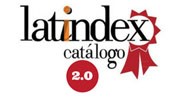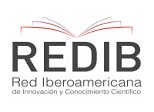Application of Data Mining Techniques for the Analysis of Academic Efficiency
DOI:
https://doi.org/10.69890/hallazgos21.v3i0.222Keywords:
data mining; data mining techniques; academic efficiency; clustering; decision tree.Abstract
The Institutions of Higher Education are immersed in periodic processes of evaluation and accreditation, that demand the fulfillment of minimum standards, being one of them the Academic Efficiency, integrated by the Student Retention indicator, which is determined by the number of students enrolled for the first time to the first year and are still studying two years later. The present study was carried out at the Agrarian University of Ecuador with the goal of predicting factors of higher incidence that generate student dropout in higher education, using Data Mining, and decision tree techniques and Clustering to obtain desertion behavior patterns. We worked with first year students of different careers at the Guayaquil and Milagro venues, during the academic periods 2014- 2015 and 2016, applying the Knowledge Discovery in Database (KKD) where the initial data is integrated, selected and transformed for the application of the chosen technique and are subsequently evaluated and spread to allow the corresponding authorities to make decisions that lead to the generation of action plans, which increase the student retention rate in the institution. With the application of the mentioned techniques it was concluded that the most relevant factor affecting the retention rate in the institution are the low averages obtained during the first semesters as well as the subjects approved, which lead to the loss of the year of the levels under study.
References
Assun, M. D. (2014). Big Data Computing and Clouds : Trends and Future Directions, 1–44.
Berkhin, P. (n.d.). Survey of Clustering Data Mining Techniques, 1–56.
Chu, X. (n.d.). Holistic Data Cleaning : Putting Violations Into Context, (L).
Cui, X., Zhu, P., Yang, X., Li, K., & Ji, C. (2014). Optimized big data K-means clustering using MapReduce, 1249–1259. https://doi.org/10.1007/s11227-014-1225-7
Dai, W., & Ji, W. (2014). A MapReduce Implementation of C4 . 5 Decision Tree Algorithm, 7(1), 49–60.
Delegation, A. C., Formia, S., & Lanzarini, L. (2013). Characterization of University Drop-Out at UNRN Using Data Mining . A Study Case, 681–690.
Dubey, A. K., Dubey, A. K., Agarwal, V., & Khandagre, Y. (2012). Knowledge discovery with a subset-superset approach for Mining Heterogeneous Data with dynamic support. 2012 CSI 6th International Conference on Software Engineering, CONSEG 2012. https://doi.org/10.1109/CONSEG.2012.6349495
Heredia, D., Amaya, Y., & Barrientos, E. (2015). Student Dropout Predictive Model Using Data Mining Techniques. IEEE Latin America Transactions, 13(9), 3127–3134. https://doi.org/10.1109/TLA.2015.7350068
Hossain, M. S., Ramakrishnan, N., Davidson, I., & Watson, L. T. (2013). How to ``alternatize’’ a clustering algorithm. Data Mining and Knowledge Discovery, 27(2), 193–224. https://doi.org/10.1007/s10618-012-0288-4
Jankowski, D., & Jackowski, K. (2014). Evolutionary Algorithm for Decision Tree Induction. In K. Saeed & V. Snášel (Eds.), Computer Information Systems and Industrial Management: 13th IFIP TC8 International Conference, CISIM 2014, Ho Chi Minh City, Vietnam, November 5-7, 2014. Proceedings (pp. 23–32). Berlin, Heidelberg: Springer Berlin Heidelberg. https://doi.org/10.1007/978-3-662-45237-0_4
Kamiran, F., & Calders, T. (2012). Data preprocessing techniques for classification without discrimination.
Knowledge and Information Systems, 33(1), 1–33. https://doi.org/10.1007/s10115-011-0463-8
Karami, A. (2013). Data Clustering for Anomaly Detection in Content-Centric Networks, 81(7), 1–8.
Lausch, A., Schmidt, A., Tischendorf, L., Lausch, A., Schmidt, A., & Tischendorf, L. (2015). Data mining and linked open data – New perspectives for data analysis in environmental in environmental research. Ecological
Modelling, 295(October), 5–17. https://doi.org/10.1016/j.ecolmodel.2014.09.018
Mihanović, A., Gabelica, H., & Krstić, Ž. (n.d.). Big Data and Sentiment Analysis using KNIME : Online Reviews vs . Social Media.
Octubre, A. E., Basilio, L., Concepción, N., & Basilio, L. (2016). Causes of the student desertion in the University of San Carlos of Guatemala in New Concepcion, Escuintla, 24–51.
Pal, A. K. (2017). Analysis and Mining of Educational Data for Predicting the Performance of Students Analysis and Mining of Educational Data for Predicting the Performance of Students, (May).
Patiño Garzón, L., & Cardona Pérez, A. M. (2012). REVIEW OF SOME STUDIES ON UNIVERSITY STUDENT DESERTION IN COLOMBIA AND LATIN AMERICA. Theoría, 21(1), 9–20. Retrieved from http://search.ebscohost.com/login.aspx?direct=true&db=a9h&AN=112611591&lang=es&site=ehost-live
Rodríguez, K., Gutiérrez, A., Wong, T., & López, D. (2015). Eficiencia académica: un indicador del que se requiere conocer más. Edumecentro, 7(3), 14.
Rubiano, S. M., & García, J. D. (2016). Analysis of Data Mining Techniques for Constructing a Predictive Model for Academic Performance Methodological Development, 39–48.
Sidhu, N. K., & Kaur, R. (2013). Clustering In Data Mining, 4(April), 710–714.
Timar, R., & Jim, J. (2013). Determinning school dropout profiles using data analysis, 373–383.
Vergaray, D. (2016). A model based on decision trees to predict student dropout in Private Higher Education, 59–73.
Waller, M. A., & Fawcett, S. E. (2013). Data Science , Predictive Analytics , and Big Data : A Revolution That Will Transform Supply Chain Design and Management, 34(2), 77–84.
Yadav, S. K. (2012). Mining Education Data to Predict Student ’ s Retention : A comparative Study, 10(2), 113–117.
Yang, Q., Plant, C., Shao, J., He, X., & Bo, C. (2013). Synchronization-Inspired Partitioning and Hierarchical Clustering, 25(4), 893–905.
Downloads
Published
How to Cite
Issue
Section
License
Los artículos enviados a la Revista Científica Hallazgos21 deberán ser totalmente originales e inéditos.
Los autores son los responsables de los textos y las imágenes incluidas en los artículos y no necesariamente reflejan el pensamiento de la editorial o de la Pontificia Universidad Católica del Ecuador, Sede Esmeraldas (PUCESE).
Los autores disponen cederle a la Revista Científica Hallazgos21 todos los derechos inherentes para la edición, publicación y distribución o divulgación del mismo.
Se autoriza a las revistas firmantes de los acuerdos de Encuentros de Revistas Latinoamericanas para reproducir en parte o totalmente los artículos con la sola mención de la fuente claramente señalada.







